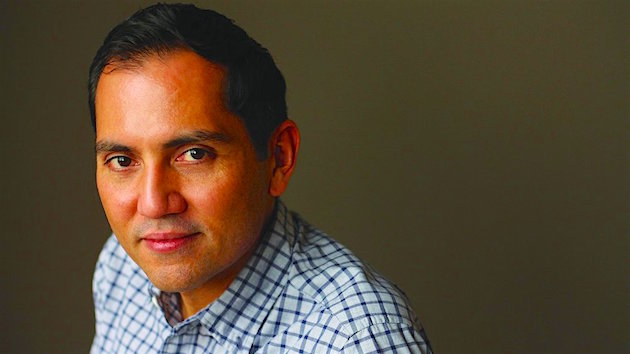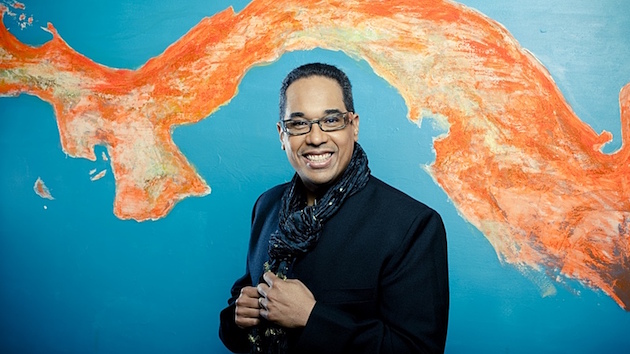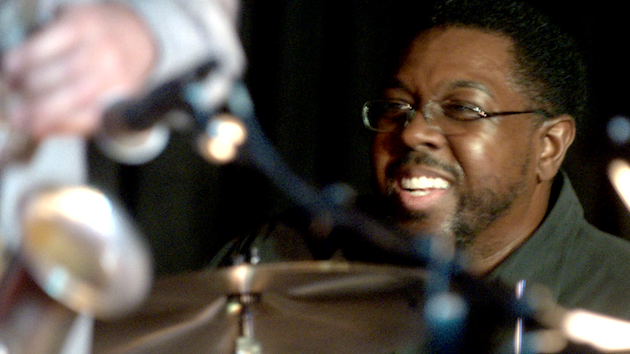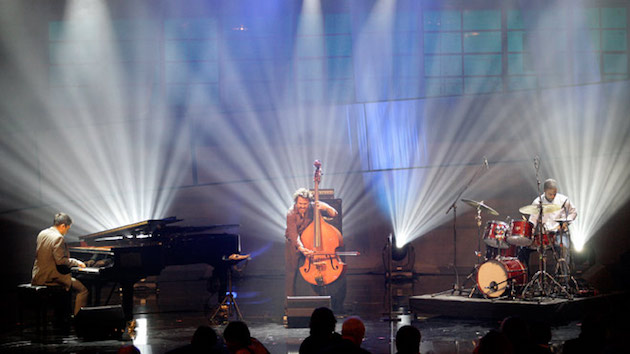
As a writer who has covered jazz for decades while spending scandalously little time in New York City, I feel a debt of gratitude to Nate Chinen. For about 12 years, starting in 2005, he was one of two primary jazz critics writing for The New York Times, overlapping with Ben Ratliff, who began adding some welcome color to the Grey Lady in 1996. Chinen’s reviews and profiles were consistently cogent and well-written, painting a pointillistic portrait of the constantly morphing Gotham scene (reviews augmented by occasional opportunities for smart wide-angle analysis).
In 2017 he decamped for the jazz-centric New Jersey station WBGO as director of editorial content, and his recent book Playing Changes (Pantheon) provides a fascinating view of the music’s evolving contours since the 1990s. If you want a thoughtful and deeply informed account of the scene in New York, which has only gained importance as jazz’s epicenter in recent decades due to its gravitational pull on musicians from around the world, Playing Changes is that book.
 Chinen tells the story of jazz’s progressive mainstream via some two-dozen profiles detailing the major contributions and creative breakthroughs of influential players such as pianists Brad Mehldau, Jason Moran, and Vijay Iyer, saxophonist Mark Turner, and trumpeters Roy Hargrove and Dave Douglas. Tracing lines of influence to seminal conceptualists, particularly Wayne Shorter, Henry Threadgill, and Steve Coleman, he identifies key hubs from which various ideas and approaches emerged. Each chapter concludes with five illustrative albums.
Chinen tells the story of jazz’s progressive mainstream via some two-dozen profiles detailing the major contributions and creative breakthroughs of influential players such as pianists Brad Mehldau, Jason Moran, and Vijay Iyer, saxophonist Mark Turner, and trumpeters Roy Hargrove and Dave Douglas. Tracing lines of influence to seminal conceptualists, particularly Wayne Shorter, Henry Threadgill, and Steve Coleman, he identifies key hubs from which various ideas and approaches emerged. Each chapter concludes with five illustrative albums.
Part of what makes Chinen’s work entertaining and fresh is that he’s not particularly interested in the jazz wars of the late 1980s and ’90s, which, to be reductive, cast Wynton Marsalis and Jazz at Lincoln Center as a stultifying Uptown force shoehorning jazz into “respectability” at the cost of the roiling creative energy of the Downtown scene. His primary point of analysis is jazz’s relationship to popular African-American music, particularly hip-hop and the neo-soul movement exemplified by D’Angelo’s 2000 album Voodoo (Cheeba Sound). It’s an often-fruitful line of inquiry as he traces production concepts and rhythmic devices from the tragically short-lived producer and rapper J Dilla and Los Angeles guru Flying Lotus, moving jazz musicians from familiar territory at far margins of popular culture to the center.
But there are several unaccountable blind spots in Chinen’s account as he falls into some of the ruts and blinkered allies that plague jazz writing, particularly from a Gotham perspective. He pays precious little attention to the massive New York influx of Latin American musicians and the way that old distinctions between Latin jazz and straight-ahead jazz are no longer operative (a Venn diagram of the two scenes in the 1970s would have overlapped by maybe 10–15 percent, while now they’d share at least half of the space).
I may have missed an earlier reference, but I didn’t catch the word “Cuba” until page 200, and then it was part of a description of the 2017 International Jazz Day celebration in Havana, not the ubiquitous presence of Cuban jazz musicians in New York (to say nothing of the Colombians, Venezuelans, Puerto Ricans, Chileans, Argentines, etc.). He devotes part of a chapter to Danilo Pérez, but barely explores the ways the brilliant Panamanian pianist helped open doors for composers looking to infuse jazz with musical forms from outside of Cuba. Jazz evolves via rhythm, and the confluence of kindred African diaspora traditions and rhythmic concepts has been one of the creative dynamics shaping jazz’s recent evolution.

Which brings me to the fundamental conceptual hole in Playing Changes. The vast majority of musicians he focuses are pianists and horn players. They’re artists who are also bandleaders, so they get the lion’s share of attention when tracing lines of influences. But drummers are the architects responsible for much of jazz’s evolution. With his intense focus on hip-hop and R&B beats, it’s odd that Chinen doesn’t take a closer look at the drummers involved.
He does discuss Marcus Gilmore, particularly his work with Vijay Iyer, and he spends a little time on drummer/composers Tyshawn Sorey, Jim Black, and Mark Guiliana (Karriem Riggins gets more attention for his work as a producer than as a drummer). An alternative history of the contemporary scene might foreground the ways in which drummers have played the definitive role in the musical hubs that Chinen writes about, such as Marvin “Smitty” Smith’s essential work with Dave Holland and Steve Coleman. Smitty’s contemporaries Jeff “Tain” Watts, Horacio “El Negro” Hernandez, and Matt Wilson were all instrumental in jazz’s evolution at the end of the 1980s, followed by Greg Hutchinson, Brian Blade, Nate Smith, and Adam Cruz. Now Eric Harland, Dafnis Prieto, Antonio Sanchez, Obed Calvaire, and Dan Weiss are making an indelible mark, a list that’s hardly complete.

It may seem like a quibble, but overlooking or sidelining the way that drummers drive new directions in jazz is to misconstrue the music’s creative wellspring. Here’s a quibble. In a book with thousands of details about recording sessions and personnel, I caught only one glaring (albeit common) mistake: Yes, Diana Ross portrayed Billie Holiday in 1972’s overwrought biopic Lady Sings the Blues, but the era’s “glamorous disco goddess” was Donna Summer, not Ross.
More importantly, Chinen’s New York perspective looks particularly distorted from this side of the country. In a late chapter talking about jazz’s increasingly polyglot nature, “that conscientious yet unforced brand of hybridism ... not only among Cuban jazz musicians but also for those who trace their heritage to India, Pakistan, Israel, China, Iraq (and beyond),” he doesn’t mention Asian Improv aRts, the Bay Area organization that’s played an outsized role in supporting some of the artists Chinen writes about most passionately.

He mentions the organization in passing twice in relationship to Vijay Iyer, but doesn’t hint at the formative role that Asian-Improv-associated artists such as saxophonist Hafez Modirzadeh, Francis Wong, and Jon Jang played in Iyer’s aesthetic. He makes numerous references to vocalist/performance artist Jen Shyu, but similarly elides Asian Improv’s influence on her early development, something that she, like Iyer, has spoken about widely. The combination of activism, radical politics, and hybrid East/West forms that landed Iyer a professorship at Harvard was forged in the Bay Area by Asian Improv artists who should be far better known.
As someone dedicated to covering arts in the Bay Area it’s all too easy to feel the local scene gets slighted in the national media. Is it parochial to wince when a paragraph in Chinen’s chapter on Iyer mentions flutist Elena Pinderhughes and trumpeters Ambrose Akinmusire and Jonathan Finlayson but doesn’t note that they all played in Berkeley High’s vaunted jazz program? Yeah. Trying to corral an amorphous and rapidly shifting scene in one book is a daunting task, one that Chinen succeeds at admirably. Hopefully some fellow writers will soon follow in his footsteps, because there are many more stories to tell and musical avenues to cover.




